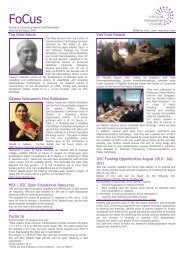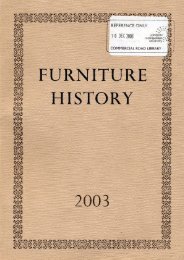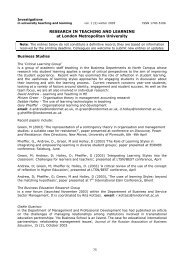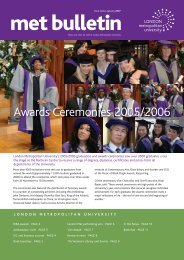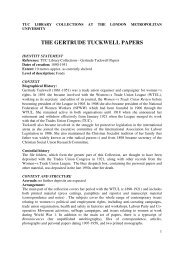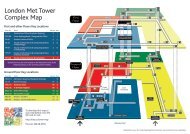Developing practice-based research with persona dolls for
Developing practice-based research with persona dolls for
Developing practice-based research with persona dolls for
Create successful ePaper yourself
Turn your PDF publications into a flip-book with our unique Google optimized e-Paper software.
<strong>Developing</strong> Practice-Based Research 9<br />
Persona <strong>dolls</strong>, a tool <strong>for</strong> knowledge and emotions?<br />
Dolls in an educational world<br />
Dolls are not just <strong>for</strong> the play corner or only meant <strong>for</strong> girls! They<br />
have deservedly had a place in classes <strong>for</strong> many decades, used by<br />
teachers as well as children. Increasingly <strong>dolls</strong> are used to function in<br />
the same way as puppets, but <strong>with</strong>out any strings.<br />
As a result of an educational visit to a Belgian toy museum, four<br />
students in the teacher training college introduced a class doll during<br />
their teaching <strong>practice</strong>. Reflecting on their <strong>practice</strong>, the students<br />
argued that ‘the <strong>dolls</strong> gave them extra security, extra ears and eyes’.<br />
They had the impression ‘not being alone in front of the pupils’ and<br />
‘that the doll was a partner, a supporter during their instructions’. To<br />
accompany the doll, the students often brought some extra effects: a<br />
basket, or a suitcase filled <strong>with</strong> small and attractive things to<br />
introduce new ideas and build a different environment.<br />
One student teacher gave her doll the symbolic name Fidelio, in<br />
order to improve the children’s self-confidence, and she <strong>practice</strong>d to<br />
move <strong>with</strong> the doll ‘Fidelio’ in a natural way. On one occasion she<br />
used Fidelio to listen to the children’s experiences after a class visit<br />
to the dentist. Fidelio was included in circle time. The doll<br />
accompanied the student in managing silent working time.<br />
Another teacher, Tom, used Barthel as an outdoor doll when he<br />
worked in a community school on the border between France and<br />
Belgium. Several pupils in the class come from French families and<br />
spoke French: this project stimulated children to reflect on their outof-school<br />
activities and to express their feelings, desires and their<br />
way of living. ‘Barthel’ was an acronym: each letter makes a point in<br />
Tom’s classroom.<br />
Barthel<br />
B (Beleefd): politeness to teachers, parents, pupils<br />
A (Aandachtig): giving attention to others, the school and<br />
to lessons<br />
R (Respect): <strong>for</strong> opinion, and <strong>for</strong> the work of other pupils<br />
T (Tolerant): tolerance to other<br />
H (Hulpvaardig): helpful to others, if you have the capacity<br />
E (Eerlijk): to be honest<br />
L (Lief): to be good to each other and to contribute to a good<br />
atmosphere<br />
Barthel became a mediator to create a great class atmosphere,<br />
helping introduce class rules <strong>based</strong> on the seven values. The teacher<br />
organized a <strong>for</strong>um <strong>with</strong> Barthel to discuss these values.







